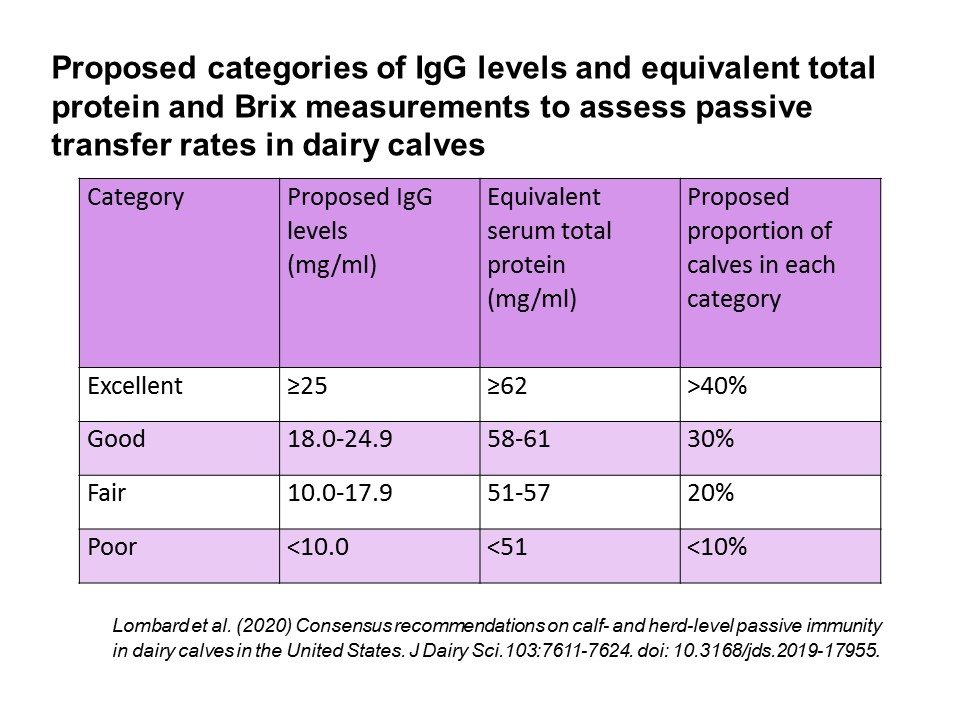
Collaborative research involving the wider veterinary profession to assess passive transfer status of UK dairy herds
RVC researchers have begun what they hope will be the largest study of its kind within the United Kingdom, to determine and benchmark individual and herd-level passive transfer status across dairy herds within the UK.

Challenge
Colostrum is essential for the provision of maternally derived antibodies to the new-born calf. This process, known as passive transfer, ensures that neonatal calves are provided a degree of immune protection during early life.
Within the UK, the prevalence of failure of passive transfer at the individual-calf level remains high. This is evidenced by recent studies performed in Scotland and southern England, which identified failure of passive transfer in 14% and 21% of calves respectively. One challenge with these studies is that they are limited to a relatively low number of farms, all located within a specific region, making extrapolation to a national context difficult. Furthermore, although new guidelines for the assessment of passive transfer status have been suggested in North America, their achievability has not been assessed in dairy herds within the United Kingdom.
Solution
Researchers at the RVC are seeking to enrol veterinary practices into a PhD study entitled ‘Assessment of current colostrum feeding practices and extent of passive transfer in dairy herds in the United Kingdom’. They hope that this study will be the largest of its kind within the UK, which will increase our understanding of the herd-level prevalence of passive transfer in UK dairy herds.
The project, funded by the Barham Benevolent Foundation, will also determine the achievability of recently updated thresholds suggested by consensus of North American experts.
The study is being led by PhD student George Lindley, who conceived the idea while working as a farm practitioner during a European College of Bovine Health Management (ECBHM) residency at the RVC.
The project will harvest and compile prospective total protein data routinely collected by practitioners from calves between 1 and 7 days of age. This data, combined with a brief questionnaire, will be used to determine how farmers are managing the harvesting, storage and feeding of colostrum and benchmark enrolled herds. Breed and gender differences will also be assessed, and the herd-level prevalence of failure of passive transfer determined.

Practices who sign up are expected to collect consent from farmers prior to routine serum total protein sampling and record and store the results of any analysis, alongside calf age, gender, breed, and farm. A questionnaire, lasting approximately 20 minutes, must be completed for each farm once during the study period. After agreeing to participate, practices who sign up will be contacted on a quarterly basis for collection of the data. Once collated, researchers will anonymise and benchmark each farm, with the results provided to participating practices.
The project started in October 2022 and is seeking to practice participation until October 2023, with the target for publication during early 2024. Practices with any number of dairy clients within England, Scotland, Wales or Northern Ireland are encouraged to consider signing up. Interested parties are invited to get in touch with George via email (glindley2@rvc.ac.uk).
Impact
There is a wealth of information being collected routinely by farm vets regarding passive transfer which, if compiled, may provide helpful information regarding the health and welfare of calves born on dairy farms within the United Kingdom. With this study we hope to harvest that data in a way that adds little extra work to vets and practices involved but provides useful information for those stakeholders involved and the industry as a whole.
This study will inform us about current youngstock feeding and management practices and their associations with passive transfer. Furthermore, it will provide a standard as to how successful our dairy herds are at ensuring adequate passive immunity in their calves. Once collated, this information will provide a basis for practitioners to assist farmers in refining their youngstock management.
Partners
Funded by the Barham Benevolent Foundation
